Last Updated: August 15th, 2024
Understanding the Differences Between 529 Plans and Indexed Universal Life Insurance (IUL):
Navigating the world of financial planning can be overwhelming, especially when faced with multiple options to secure your future and that of your loved ones. Two popular avenues are 529 plans and Indexed Universal Life (IUL) insurance policies. While both offer growth and security, they cater to distinct needs and come with unique characteristics. This guide unpacks the key differences between these financial instruments, empowering you to make informed decisions aligned with your specific goals.
What is Indexed Universal Life (IUL) Insurance?
Indexed Universal Life (IUL) insurance is a type of cash-value life insurance that combines the benefits of traditional life insurance with potential for growth tied to the performance of specific market indexes. A portion of the premiums goes towards providing life insurance coverage, while the remainder is invested in indexed accounts, such as the S&P 500. As the market performs well, the policy’s cash value can grow, providing a potential source of funds for the policyholder.
Indexed Universal Life (IUL) insurance policies represent a unique hybrid of life insurance protection and cash value accumulation. Here’s a comprehensive overview of their distinguishing features:
-
Dual Purpose:
- Unlike 529 plans, which are specifically tailored for education savings, IUL insurance serves multiple purposes, including income protection, wealth accumulation, and legacy planning.
- In addition to providing a death benefit to beneficiaries in the event of the insured’s passing, IUL policies offer a cash value component that accumulates funds over time, similar to a savings or investment account.
-
Tax Treatment:
- One of the primary advantages of an IUL policy is its tax-advantaged status. Similar to other permanent life insurance policies, the cash value growth within an IUL policy accumulates on a tax-deferred basis.
- Withdrawals from the cash value are generally tax-free up to the amount of premiums paid into the policy, providing tax-efficient access to funds during the policyholder’s lifetime. However, only the portion of withdrawals representing the policy’s cash value is tax-free. Any portion exceeding the premiums paid will be taxed as income.
-
Market-Linked Returns:
- Unlike traditional whole life insurance, which offers fixed interest rates, IUL policies offer the potential for market-linked returns through indexed interest crediting strategies.
- These strategies are tied to the performance of selected stock market indices, such as the S&P 500 or the Nasdaq 100, offering the opportunity for higher returns based on market performance.
-
Guarantees and Protection:
- IUL policies typically come with guaranteed minimum interest rates, ensuring that the cash value component continues to grow even in the event of market downturns. While they offer some protection, the actual returns might be lower than the stated minimums due to various factors like policy fees and expenses.
- Additionally, policyholders have the option to purchase riders for enhanced protection, such as accelerated death benefit riders or guaranteed insurability riders, providing added financial security and flexibility.
-
Flexibility and Access to Funds:
- Unlike 529 plans, which have restrictions on the usage of funds for qualified education expenses, IUL policies offer greater flexibility in accessing cash value funds.
- Policyholders can use the accumulated cash value to supplement retirement income, cover unforeseen expenses, or leave a financial legacy for heirs, without limitations on usage.
What Are 529 Plans:
Designed specifically for education savings, 529 plans offer tax-advantaged growth for qualified expenses. Contributions may not be tax-deductible federally, but some states provide additional tax benefits. Earnings within the plan accumulate tax-deferred, and qualifying withdrawals for education expenses are entirely tax-free at both the federal and state level in many cases.
-
Purpose and Usage:
- The primary purpose of a 529 plan is to save for qualified education expenses, including tuition, books, room and board, and other related costs associated with higher education.
- Funds invested in a 529 plan can be used at eligible institutions nationwide, providing flexibility for beneficiaries attending various colleges and universities.
-
Tax Benefits:
- Contributions to a 529 plan are made with after-tax dollars, meaning they are not tax-deductible on the federal level. However, some states offer tax deductions or credits for contributions made to in-state 529 plans.
- One of the most significant advantages of a 529 plan is its tax-free growth potential. Earnings within the account accumulate on a tax-deferred basis, and qualified withdrawals for educational expenses are entirely tax-free at the federal level, and often at the state level as well.
-
Investment Options:
- 529 plans typically offer a range of investment options, including mutual funds, exchange-traded funds (ETFs), and age-based portfolios. These investment choices allow account holders to tailor their portfolios based on risk tolerance, time horizon, and investment preferences. Some 529 plans also offer individual stocks and bonds within their investment options.
-
Contributions and Limits:
- While contribution limits vary by state, they are relatively high, often exceeding $300,000 per beneficiary in some cases.
- Additionally, individuals can make lump-sum contributions or set up automatic contributions to systematically grow their savings over time.
-
Ownership and Control:
- The account owner retains control over the 529 plan, including the ability to change beneficiaries, adjust investment allocations, and make withdrawals for qualified expenses.
- In the event that the designated beneficiary does not utilize all the funds, the account owner can typically change the beneficiary to another eligible family member without incurring tax penalties.
Comparing 529 Plans and Indexed Universal Life Insurance:
While both 529 plans and IUL insurance policies offer avenues for financial growth and security, they cater to distinct needs and objectives. Here’s a comparative analysis highlighting their key differences:
-
Purpose and Focus:
- 529 plans are specifically designed for education savings, offering tax-advantaged growth for qualified expenses.
- IUL insurance serves broader financial goals, providing life insurance protection and cash value accumulation for various purposes beyond education.
-
Tax Treatment and Benefits:
- Contributions to 529 plans grow tax-free and withdrawals for qualified expenses are tax-exempt.
- IUL policies offer tax-deferred growth and tax-free withdrawals, providing flexibility in accessing funds for a range of financial needs.
-
Investment Options and Returns:
- 529 plans offer a selection of investment options, with returns dependent on market performance and investment allocations.
- IUL policies provide market-linked returns tied to specific indices, offering potential for higher returns while safeguarding against market downturns.
-
Usage and Access to Funds:
- 529 plans restrict usage to qualified education expenses, with penalties for non-qualified withdrawals.
- IUL policies offer flexibility in accessing cash value funds for a variety of purposes without limitations on usage.
- 529 plans can impact financial aid eligibility, while IUL policies generally do not.
-
Risk and Guarantees:
- 529 plans are subject to market fluctuations and investment risk, with no guarantees on returns.
- Potential for higher fees associated with IUL policies compared to 529 plans.
- IUL policies provide downside protection through guaranteed minimum interest rates, ensuring the safety and stability of cash value accumulation.
In conclusion, both 529 plans and Indexed Universal Life insurance policies offer valuable opportunities for financial growth and security, each with its own set of benefits and considerations. Understanding the nuances of these financial instruments is crucial for making informed decisions aligned with your specific goals and objectives.
Before choosing between a 529 plan and an IUL policy, consider factors such as your financial needs, risk tolerance, time horizon, and long-term objectives. Consult with financial advisors and insurance professionals to explore your options, evaluate potential strategies, and create a comprehensive financial plan tailored to your unique circumstances.
By leveraging the benefits of 529 plans and IUL insurance wisely, you can lay the foundation for a secure financial future, protect your loved ones, and pursue your long-term aspirations with confidence and clarity.
When to choose a IUL and When a 529

Choosing the Right Option:
The best choice depends on your individual circumstances and goals. Consider these factors:
- Financial needs: Are you focusing on education savings, wealth accumulation, or both?
- Risk tolerance: How comfortable are you with market fluctuations?
- Time horizon: When will you need access to the funds?
- Long-term objectives: What are your goals for financial security and wealth transfer?
Scenario 1: Choosing a 529 Plan
The Education-Focused Family: Sarah and John are a young couple with two children, ages 5 and 7. They prioritize investing in their children’s education and want to save specifically for college expenses.
Reasons to Choose a 529 Plan:
- Tax-Advantaged Education Savings: Sarah and John can take advantage of the tax-free growth offered by 529 plans. By contributing to a 529 plan, they can invest funds earmarked for education expenses and enjoy tax-free withdrawals when their children attend college.
- Flexible Contribution Options: With no income limitations and relatively high contribution limits, Sarah and John can contribute substantial amounts to their 529 plans over time, maximizing their savings potential for their children’s education.
- State Tax Benefits: Depending on their state of residence, Sarah and John may qualify for additional tax deductions or credits for contributions made to their state’s 529 plan, further enhancing the tax benefits of their savings strategy.
In this scenario, a 529 plan aligns with Sarah and John’s goal of saving for their children’s education, offering tax advantages and flexibility tailored to their specific needs.
Scenario 2: Choosing an Indexed Universal Life (IUL) Insurance Policy
The Financially Diverse Individual: David is a successful entrepreneur in his mid-40s with a diverse portfolio of assets, including real estate investments, retirement accounts, and a substantial estate. He’s seeking a comprehensive financial strategy that provides both protection and growth opportunities for his wealth.
Reasons to Choose an Indexed Universal Life (IUL) Insurance Policy:
- Wealth Protection and Legacy Planning: With an IUL insurance policy, David can secure a death benefit to protect his family and assets in the event of his passing. The death benefit provides financial security and serves as a valuable component of his estate planning strategy.
- Tax-Advantaged Cash Value Accumulation: David can leverage the tax-deferred growth of an IUL policy to accumulate cash value over time. The policy’s cash value component offers flexibility in accessing funds for retirement income, estate liquidity, or other financial needs, with potential tax-free withdrawals and loans.
- Market-Linked Returns with Downside Protection: As an entrepreneur, David understands the importance of balancing risk and reward. An IUL policy offers market-linked returns tied to specific indices, providing the potential for upside growth while safeguarding against market downturns with guaranteed minimum interest rates.
In this scenario, an Indexed Universal Life (IUL) insurance policy aligns with David’s comprehensive financial objectives, offering a blend of protection, growth potential, and tax advantages tailored to his unique circumstances.
Frequently Asked Questions
For 529 Plans:
1. Are 529 plan contributions tax-deductible?
- Contributions to 529 plans are not tax-deductible at the federal level. However, some states offer tax deductions or credits for contributions made to in-state 529 plans.
2. Can I change the beneficiary of a 529 plan?
- Yes, account owners have the flexibility to change the beneficiary of a 529 plan to an eligible family member without incurring tax penalties.
3. What happens if my child does not use all the funds in the 529 plan?
- If the designated beneficiary does not use all the funds for qualified education expenses, the account owner can typically change the beneficiary to another eligible family member or use the funds for other qualified expenses without penalties.
4. Can I use funds from a 529 plan for K-12 education expenses?
- Yes, the Tax Cuts and Jobs Act expanded the usage of 529 plan funds to include up to $10,000 per year for K-12 tuition expenses at public, private, or religious schools.
For Indexed Universal Life (IUL) Insurance Policies:
1. How does the cash value component of an IUL policy accumulate funds?
- The cash value component of an IUL policy accumulates funds on a tax-deferred basis, often through indexed interest crediting strategies tied to specific market indices, such as the S&P 500 or the Nasdaq 100.
2. Can I access the cash value funds in an IUL policy during my lifetime?
- Yes, policyholders can access the cash value funds in an IUL policy through tax-free withdrawals and loans, provided the policy is structured correctly and within certain limits.
3. Are there fees associated with IUL insurance policies?
- Yes, IUL policies typically come with various fees, including cost of insurance charges, administrative fees, and expenses related to the cash value component and riders. It’s essential to understand and evaluate the fees associated with an IUL policy before purchasing.
4. What happens if the market indices tied to my IUL policy perform poorly?
- Indexed Universal Life insurance policies often come with guaranteed minimum interest rates, ensuring that the cash value component continues to grow even in the event of market downturns.



